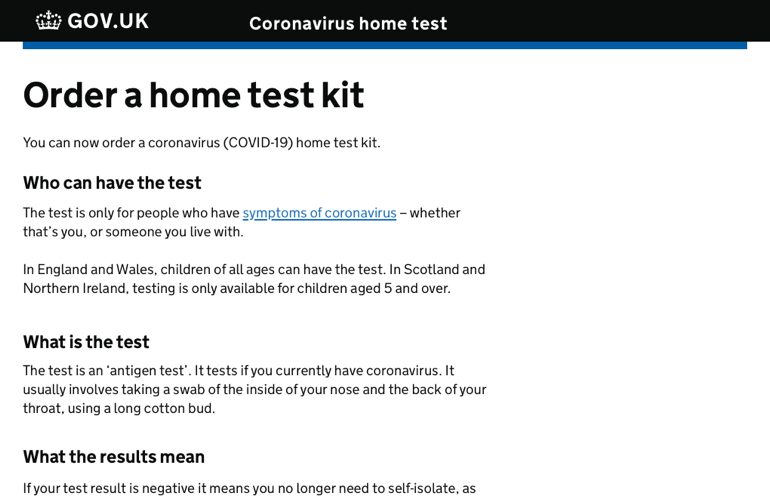Case Study - Coronavirus home testing service
Duration: 4 months | Role: Service Designer

Introduction
To develop a service to allow citizens to be tested for the Coronavirus. Initially this service was designed and developed with 8 days to support London Ambulance Service employees wanting to get back to the frontline, but was then expanded to all key workers before being made available to all UK citizens.
The end-to-end service required the collaboration between multiple online and offline service operations.

Service design
Requirements for the service changed frequently and, in most cases, directly from the office of Number 10’s. The service relied on complex relationships between multiple suppliers (such as Amazon Logistics, Royal Mail and the testing laboratories) in order for the subject to receive the test kit through to getting their lab results back.
The challenge of designing services with so much complexity was to ensure that the user found it simple and intuitive to use.

Facilitating research within a pandemic
Creating new services during the pandemic was something the whole team was unfamiliar with. In order to better understand the needs of our users and their behaviours during this period, I conducted a series of remote qualitative studies including 8 day long Diary Studies. This provided key insights into measuring the success of our live service but also allowed us to make essential adaptations.
As well as qualitative research, the team also used quantitative research so that we could not only understand the issues users had but also the frequencies of these.

'Assisted Digital' design
In order to make the service as accessible to as many citizens as possible, a MVP Assisted Digital channel was designed and set up. This would allow those who either not willing or unable to use digital services to access a home testing kit. This was made possible using a call centre to step through the service on their behalf.